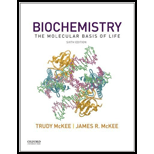
To review:
Definition of the following terminologies:
a) Prokaryote
b) Eukaryote
c) Organelle
d) Hydrophilic
e) Hydrophobic
Introduction:
Organisms are classified into prokaryotesand eukaryotes on the basis of theircell characteristics. Both types of cells contain cytoplasm, which provides a site for various
Explanation of Solution
a) Prokaryote: Unicellular living organisms thatlack a well-defined nucleus are termed as prokaryotes. They are classified into two distinct classes: archaea and bacteria. Some of the bacteria can cause disease, such as cholera, syphili, snd tetanus, whereas some are useful to humans, such as those which are involved in the preparation of yogurt, chees, end bread. Organisms in group Archaea can thrive in challenging habitats.
b) Eukaryote: These organisms can be unicellular (such as protist) ormulticellular (such as plants and animals). They possess a well-defined nucleus and membrane-bound organelles(subcellular compartments) in their large sized cells. Their cells are more complex due to cellular specialization (according to their specific functions) and communication mechanisms among the cells.
c) Organelles: These are thesubcellular compartmentspresent mainly in eukaryotes. They have the ability to perform specificcellular functions. They are often bounded by a membrane, and provide compartmentalization for efficient regulation of biochemical processes.
d) Hydrophilic: The molecules thatfavorably interact with water molecules or polar materials are termed as hydrophilic. They possess charge (positive or negative), or contain electronegative elements, such as nitrogen or oxygen to form a hydrogen bond with water. Examples of such molecules in a cell include sugar (glucose) and salt (sodium chloride).
e) Hydrophobic: Hydrophobic molecules are those which do not interact with water as they lack any electronegative elements. They tend to form aggregation spontaneously when mixed with waterin an aqueous environment. Aggregation results in minimum contact between their nonpolar hydrocarbon chains and water, thus preventing any interaction.
Therefore, it can be concluded that prokaryotes and eukaryotes are different from each other on the basis of nucleus, size, and presence of membrane-bound organelles. Substances in a cell can be hydrophobic or hydrophilic, depending upon whether they interact with water or not.
Want to see more full solutions like this?
Chapter 2 Solutions
BIOCHEMISTRY:MOLECULAR...-W/ACCESS
- The antifungal drug nystatin kills fungal cells in part through formation of membrane pores that cause K+ leakage. To what class of membrane-inserting molecules does nystatin belong?arrow_forwardOrganic chemistry, please solve these two questions please, shortlyarrow_forwardCan you please answer these two sub questions and show all of the steps to the solutionarrow_forward
 BiochemistryBiochemistryISBN:9781319114671Author:Lubert Stryer, Jeremy M. Berg, John L. Tymoczko, Gregory J. Gatto Jr.Publisher:W. H. Freeman
BiochemistryBiochemistryISBN:9781319114671Author:Lubert Stryer, Jeremy M. Berg, John L. Tymoczko, Gregory J. Gatto Jr.Publisher:W. H. Freeman Lehninger Principles of BiochemistryBiochemistryISBN:9781464126116Author:David L. Nelson, Michael M. CoxPublisher:W. H. Freeman
Lehninger Principles of BiochemistryBiochemistryISBN:9781464126116Author:David L. Nelson, Michael M. CoxPublisher:W. H. Freeman Fundamentals of Biochemistry: Life at the Molecul...BiochemistryISBN:9781118918401Author:Donald Voet, Judith G. Voet, Charlotte W. PrattPublisher:WILEY
Fundamentals of Biochemistry: Life at the Molecul...BiochemistryISBN:9781118918401Author:Donald Voet, Judith G. Voet, Charlotte W. PrattPublisher:WILEY BiochemistryBiochemistryISBN:9781305961135Author:Mary K. Campbell, Shawn O. Farrell, Owen M. McDougalPublisher:Cengage Learning
BiochemistryBiochemistryISBN:9781305961135Author:Mary K. Campbell, Shawn O. Farrell, Owen M. McDougalPublisher:Cengage Learning BiochemistryBiochemistryISBN:9781305577206Author:Reginald H. Garrett, Charles M. GrishamPublisher:Cengage Learning
BiochemistryBiochemistryISBN:9781305577206Author:Reginald H. Garrett, Charles M. GrishamPublisher:Cengage Learning Fundamentals of General, Organic, and Biological ...BiochemistryISBN:9780134015187Author:John E. McMurry, David S. Ballantine, Carl A. Hoeger, Virginia E. PetersonPublisher:PEARSON
Fundamentals of General, Organic, and Biological ...BiochemistryISBN:9780134015187Author:John E. McMurry, David S. Ballantine, Carl A. Hoeger, Virginia E. PetersonPublisher:PEARSON





